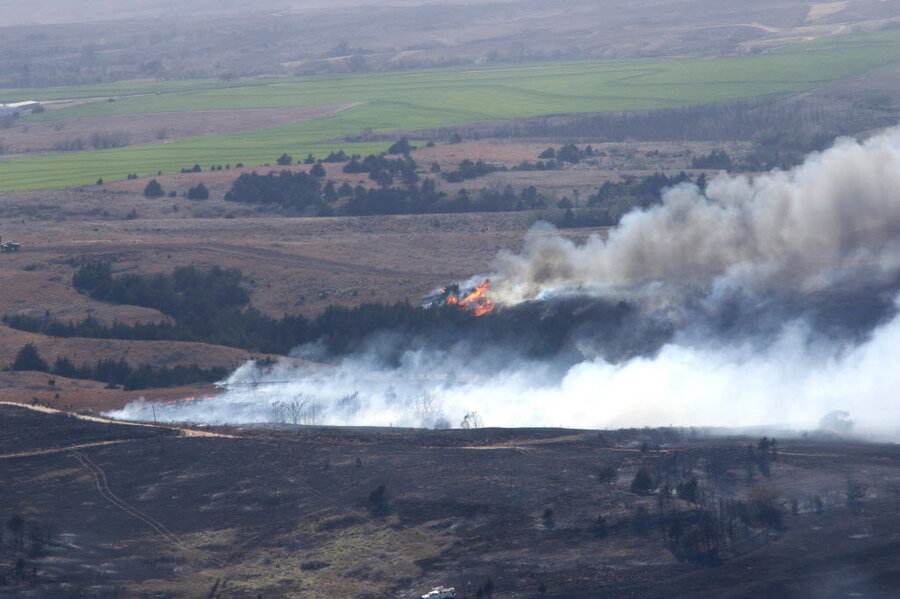Homes evacuated as wildfires scorch Oklahoma-Kansas border
Loading...
Authorities are urging hundreds of residents to evacuate their homes, as wildfires continue to scorch the Kansas-Oklahoma border Wednesday.
The 300 residents of Freedom, Okla., a small town less than 25 miles from the Kansas border, were told to evacuate their homes Tuesday evening after fire-conducive conditions such as dry air, warm temperatures, and winds up to 55 miles an hour fanned the flames.
"While conditions will improve slightly tomorrow, warm temperatures, very dry fuels and continued strong winds will linger over the next couple of days," Oklahoma Forestry Services warned Tuesday. "The public should not let its guard down until conditions improve significantly."
Matt Lehenbauer, the emergency management director for Woodward County, where Freedom is located, told the Wichita Eagle that as of 8:30 p.m. Tuesday, the fire line had stretched to 15 miles long and burned an estimated 27,500 acres.
"We are expecting to be here all night," said Mr. Lehenbauer. "The winds now are moving out of the west, which is pushing the active fire into the unburned area. Right now, we have zero percent of the fire contained, and there have been some structural losses."
While extreme weather conditions may be encouraging the flames, Freedom's firefighters and residents are counting on the Cimarron River west of the town to stop the flames.
"We're going to have to really watch it, because if it jumps that river, it's going to be tough to stop again," Lehenbauer told the Associated Press.
For Woodward County residents, Tuesday's flames might feel like a little too much too soon: the town of Freedom is just five miles away from where the record-breaking Anderson Creek Fire broke out for unknown reasons two weeks ago.
After starting in Oklahoma, the Anderson Creek Fire moved across the border to become the worst wildfire in Kansas history, scorching an estimated 574 square miles of rural lands between the two states. On March 28, the Kansas Forest Service reported that the fire was about 90 percent contained overall, thanks to collaborative efforts from the National Guard, fire departments from neighboring states, community college fire science students, and unexpected snowfall.
But the weather has since turned its back on firefighting efforts, requiring evacuations in Freedom and more than 150 evacuations in Kansas in Riley and Geary counties. No one in either Kansas or Oklahoma has been reported injured by the fire.
"Dangerous weather conditions have resulted in fire outbreaks across the state this afternoon," George Geissler, Director of Oklahoma Forestry Services, said in a Tuesday press release. "We can't emphasis [sic] enough how important it is for everyone to be extremely careful with anything that could cause a spark."
The smoke and soot from Tuesday's fire triggered an air quality warning in Wichita.
"It's possible that the winds are causing that smoke plume to get this far east," Jim Caruso, a meteorologist with the National Weather Service, told the Wichita Eagle. "It would most likely be that fire, unless there is some smaller grass fires around....It has been a smoke-out here lately."








